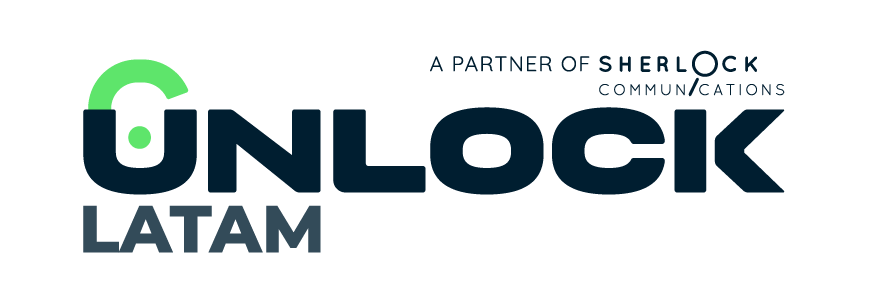What Is Prospecting?The first step for a strong strategy
Prospecting marketing is the process of identifying and qualifying potential customers (prospects) who have a high probability of becoming actual buyers of a product or service.
There are very common concepts in the commercial processes of any company that we sometimes hear or repeat without being clear what they mean. We already talked about the lead generation And now it’s the turn of prospecting marketing, which is a very efficient tool when we want to advance the strategy of converting a potential client into a real client.
What is prospecting marketing?
Prospecting marketing is a very important step in the sales cycle and includes a series of tools focused on filling the funnel with quality leads, aiming to convert them into real customers.
In sales, refers to the process of identifying and actively seeking new potential customers or “prospects” who may be interested in the products or services a company offers.
How are prospects different from leads?
Although these words are often used interchangeably, they do not mean the same thing. It is important to know the differences between them: leads and prospects need to be treated differently because the success of your sales strategy depends on it.
Leads in marketing refer to any individual or organization within your marketing reach who has interacted with your brand way or has the potential to become a future customer. A lead can be someone that sees or downloads your content, signs up for a trial, or visits your site or store.
Then, once the buyer enters our commercial funnel, it is extremely important to qualify and nurture them along the way to help them go through the purchasing process that will take them from target audience to potential client and then to customer.
It is the “prospect” stage. The prospecting step.
The prospect in the commercial funnel
The commercial funnel is divided into 3 distinct stages:
- TOFU (Top of the funnel)
- MOFU (top of funnel)
- BOFU (Bottom of the funnel)
Precisely, the primary difference between lead and prospect is the point at which our potential client is in the commercial funnel.
A lead is a potential customer who is in the Tofu and who can continue to be fed content to turn it into a business opportunity in the future. Once it has been identified and has passed the first enrichment process, it becomes a Prospect.
So, ee are already in the Mofu where a Lead is considered a Prospect. In this stage, a direct two-way communication is initiated: when the potential customer expresses some interest, they become a prospect.
The marketing prospect is a potential customer who:
- Fit the characteristics of your ideal client.
- You have the means to buy (money).
- You are authorized to make purchasing decisions.
That is to say, on some level, that prospect is one step ahead of the lead. Broadly speaking, and simplifying a process that is more complex and that can be implemented in very varied ways, a basic sales scheme is organized as follows:
- Gather leads.
- Qualify them as prospects.
- Close the sale.
As you can see, prospects are a very important asset for any company that is implementing a strategy to increase its sales. If we manage to secure enough prospects, we guarantee the continuity of the activity and economic performance.
How prospecting marketing is developed
Prospecting marketing develops different strategies and techniques to find and qualify prospects, building a solid base of potential clients. To do this, you have to research, analyze and follow up on these prospects to, through systematic communication, convert them into paying customers.
Prospecting marketing techniques
To successfully carry out sales prospecting, specific tools and techniques are used. Some of them are:
- Cold Calling: sales representatives call companies or individuals who have not previously expressed interest in the product or service. These calls can be made by phone or email.
- Social networks: use social media platforms like LinkedIn to find and connect with potential leads and establish professional relationships.
- Referral Marketing: ask current customers to reference you and recommend your products or services to other people or companies.
- Email Marketing: send emails to a list of prospects with relevant, personalized content to generate interest and engagement.
- Adverts (online Advertising and SEM): use online advertising and paid search campaigns to attract potential customers through search engines like Google.
- Events and Trade Fairs: participate in industry events and trade shows to interact with potential leads in person and gather contact information.
- Follow-up and Nurturing of Prospects: Develop lead tracking and nurturing strategies to maintain interest over time and guide them toward conversion.
- Evaluation and Qualification of Prospects:Use specific criteria to evaluate and qualify prospects based on their suitability and likelihood of becoming customers.
Sales prospecting Tools
- Customer Relationship Management (CRM): CRM systems allow companies to manage and track customer relationships. They help organize those contacts, favoring the approach at the right time and thus close the sale.
- Marketing Automation Tools– Help businesses create targeted, personalized marketing campaigns to attract potential customers and guide them through the sales process.
- Databases and Contact Lists: Accessing company databases and contact lists of potential clients is essential to identify new prospects. These lists are often obtained from public sources or data companies.
- Business Intelligence Tools: These tools provide insights into companies and their performance, which can help sales teams identify high-quality leads.
Sales prospecting for B2B businesses
To achieve adequate sales prospecting for B2B businesses, there are some points that you should take into account. First of all, look for the right profile, determine who the ideal buyer of your product is. Age range, position, experience, challenges, motivations, etc. The idea is that you can easily distinguish this type of ideal client.
Then, have clear objectives and don´t skip the steps. What is initially sought with prospecting is to get in touch with the client and understand their problems before presenting potential solutions.
Accompany the prospect in their research. It is important not to make the mistake of defining the purchasing process according to what you think a prospect will do and not how it actually happens.
Many times it is the case that your potential buyers are just discovering the problem they have and taking the first steps to understand the need that your product can solve. Therefore, it seeks to accompany the prospect with useful information during their journey.
Successful sales prospecting often involves a combination of tools and techniques to identify and qualify the right prospects. It is important to adapt these strategies to the needs and characteristics of your target market and your specific industry.
As you ser, prospecting is a great way to expand your business, find new customers, and increase your profits. By expanding and improving the quality of your potential customer database, you will improve the visibility of your brand and increase your sales.
Mastering Outbound Sales: Strategies for Predictable Revenue Growth
Mastering Outbound Sales: Strategies for Predictable Revenue Growth Nobody said it better than Aaron Ross, author of Predictable Revenue: “You want growth that doesn’t require guessing, hope, and frantic last-minute...
The Role of Sales Development Representatives (SDRs) in Predictable Revenue
The Role of Sales Development Representatives (SDRs) in Predictable Revenue Sales Development Representatives (SDRs) play a crucial role in the implementation of the "Predictable Revenue" framework, initially conceptualized by Aaron...
B2B prospecting: finding high-quality leads
B2B prospecting: finding high-quality leads Although there are very common concepts among those of us who work in different areas of marketing, more than once we take for granted that...



